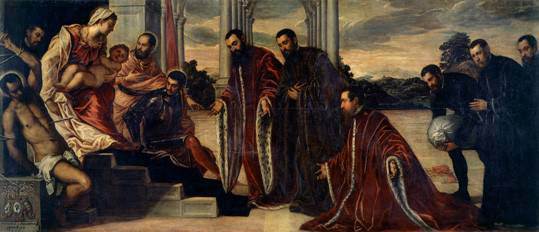
Statuette of a goddess, 1st century B.C.–1st century A.D. Babylon. Alabaster, stucco, gold, and rubies. Musée du Louvre, Paris © RMN-Grand Palais / Art Resource, NY.
Ancient Middle East at the Metropolitan Museum The landmark exhibition ‘The World between Empires: Art and Identity in the Ancient Middle East’, at The Metropolitan Museum of Art, focuses on the remarkable cultural, religious, and commercial exchange that took place in cities including Petra, Sidon, Baalbek, Palmyra, and Hatra between 100 B.C. and A.D. 250. March 18 – June 23, 2019. ]]>
Source: Metropolitan Museum of Art
During this transformative period, the Middle East was the center of global commerce and the meeting point of two great empires—Parthian Iran in the east and Rome in the west—that struggled for regional control. The exhibition focuses on the diverse and distinctive cities and people that flourished in this environment by featuring some 190 outstanding examples of stone and bronze sculpture, wall paintings, jewelry, and other objects from museums in the United States, Europe, and the Middle East. Among the highlights is a Nabataean religious shrine, reconstructed from architectural elements that have been dispersed to collections in the United States and Jordan, and the unique Magdala Stone, discovered in a first-century synagogue at Migdal (ancient Magdala) and showing imagery of the Temple of Jerusalem. Photographs, architectural drawings, and digital projections throughout the exhibition will evoke spectacular temples and tombs. The exhibition also examines important contemporary issues—above all, the deliberate destruction and looting of sites including Palmyra, Dura-Europos, and Hatra.
The exhibition evokes a journey along ancient trade routes, beginning in the southwestern Arabian kingdoms that grew rich from the caravan trade in frankincense and myrrh harvested there and used throughout the ancient world. Camel caravans crossed the desert to the Nabataean kingdom, with its spectacular capital city of Petra. From here, goods traveled west to the Mediterranean and north and east through regions including Judaea and the Phoenician coast and across the Syrian desert, where the oasis city of Palmyra controlled trade routes that connected the Mediterranean world to Mesopotamia and Iran and ultimately China. In Mesopotamia, merchants transported cargoes down the Tigris and Euphrates rivers to the Persian Gulf, where they joined maritime trade routes to India. These connections transcended the borders of empires, forming networks that linked cities and individuals over vast distances.
Related content
Before the Flood – Mesopotamian Art at Caixaforum Barcelona (exhibition, 2012-2013)
Follow us on:


